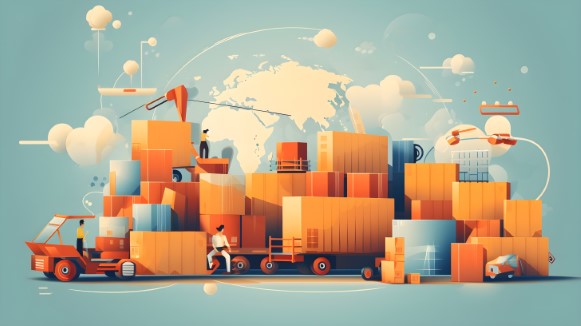Growth of ecommerce is undeniable and it goes through the multiplication of channels. It is a worldwide trend developing at varying speeds in all countries. The retail sector has seen some of the greatest changes linked to the Covid-19 crisis. Many of these have accelerated the growth of ecommerce. The smallest shops, including some that may have had no digital presence in 2019, had to rapidly “go digital”. They started developing delivery services that they had never imagined before.
Other trends in retail are less visible, yet they are signs of significant and durable changes in consumer attitudes and behaviour.
Regarding ecommerce, consumers are starting to become actors in their own right, operating distribution services. They are also supplying goods and services that are more about the one-to-one direct relationship with their customers than a traditional commercial exchange. New companies are providing these “consumer sellers” with the solutions to trade.
From the small ad in the local newspaper to patatam
One example is in second-hand goods. This has moved on substantially from the original eBay (1995) which was basically a digital evolution of the small ad. But these consumer-to-consumer solutions and even the most recent apps such as Vinted require the seller to take photos, add a description, fix a price, interact with potential buyers and deal with delivery.
Not surprisingly this has now been made easier for the seller with services such as Patatam, a website and app. Built around the concept of the collaborative and circular economy it does most of the hard work for the seller. The only hurdle that remains is to post a box of, for example, second-hand clothes and Patatam does the rest. The platform puts them up for sale, or if not likely to be sold, passes them to charities or for recycling. The seller gets a simple “per item” payment. Drop-off and pick up points across a city can further enhanced the circular economy.
Rentals, deliveries and the live streaming consumer
Another ecommerce evolution driven by individual customers is the renting out of services or goods that are no longer needed or not needed all the time. Airbnb is an obvious example when it comes to an apartment or a house; a similar principle now applies to renting out your furniture or your clothes.
Ecommerce customers are also starting to operate the final leg of some distribution services. For example, Pickme provides a service to hold on to items in case of non-delivery from a standard logistics operator when the recipient is absent. Which happens in up to one third of deliveries. Individuals earn money by becoming auxiliary neighbourhood pickup and delivery stations. Their neighbours don’t have to deal with the note left by the delivery driver to set up a second delivery or walk across town to collect the package. Major brands could see significant advantages, reducing the number of goods in transit.
TV shopping channels have also followed the online trend to relocate to the web. And live streaming is now mainstreammainstream, so individuals are also selling live. Selling means delivering of course and big and small companies need solutions. The larger operators need logisticians to be able to respond to major peaks in demand for storage and delivery. Omnichannel logistics provides that flexibility. Discover how to face the multiplicity of selling channels by reading our article !
Within ecommerce, customers have taken on new roles and novel solutions have been set up to encourage these new activities, but the logistics often remain imperfect. Specialist logisticians are in a strong position to optimise these new consumer-to-consumer transactions so that they can develop further.
Interested in new consumers trends ? Read our article to know our tips for logistics choices to meet ecommerce consumer needs !



